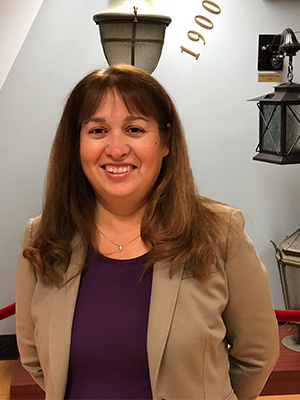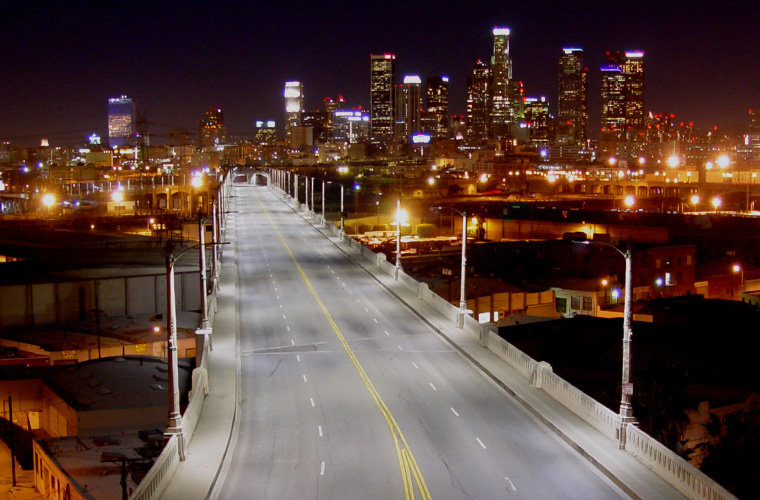The Executive Director of Los Angeles’ Bureau of Street Lighting shares how their ground-breaking LED upgrade has re-energized the city and why other cities should follow their lead.
LED upgrades are revolutionizing cities nationwide and nowhere is this more evident than in Los Angeles. There, a renowned upgrade from sodium vapor to LED technology undertaken throughout the progressive, sustainability-minded city beginning a decade ago has improved lighting quality and enhanced safety and security all while slashing energy consumption and significantly reducing energy and maintenance costs. In the following interview with tEDmag, Norma Isahakian, Executive Director of the Bureau of Street Lighting for the City of Los Angeles (http://bsl.lacity.org/), shares an update on the status of the groundbreaking LED upgrade (one of the nation’s earliest and most prominent), the comprehensive benefits it’s delivered to her city, and the advice she’d offer to electrical distributors and other cities considering a similar endeavor.

lightED: Please share some details on the scope of the lighting upgrade that was undertaken in Los Angeles and the benefits it’s delivered.
Isahakian: Our LED Conversion program started in 2008 and to-date, the city is 90% complete. The city has over 220,000 streetlights of all different types — from modern cobra heads to acorn lamp styles — and has converted over 198,000 streetlights to LEDs. In the beginning of the program a decade ago, we went through an extensive testing process that involved several neighborhoods which voted on the lights they liked best. We installed different manufacturers’ products with different color temperatures on several blocks and the whole neighborhood participated in providing comments. We initiated the program after that, but established a thorough testing process to continue to test new, developing products and as of now we’re using products by several manufacturers, including Leotek, Philips, Truly Green, and Cree.
While the program started out in 2008 by delivering energy savings of 40%, it’s currently delivering energy savings of over 70% and has produced $10 million in energy cost savings annually with a 5 to 6-year rate of return. Along with reducing carbon emissions for the city overall, the program has improved our color quality by significantly changing the city’s landscape from an orange hue to a warm white color (2700K to 3000K). Because the new lighting technology helps show objects more clearly and makes colors appear more vivid, the program has been warmly embraced by the police department, residents, business owners, and visitors alike.
lightED: Were there any challenges associated with your upgrade (e.g., at the specification level, installation level, etc.)?
Isahakian: The challenges we confronted were mainly associated with the limits of the technology over the years. The Bureau constantly pushed the envelope to request products that delivered more lumens per watt to produce a maintenance-friendly system. Eventually, the conversion program needed a lamp-based product. The LED products initially started out with a lot of glare and hot spots but eventually the LED manufacturers developed nice, warm, low-glare lamps.
lightED: What tips can you offer electrical distributors regarding do’s and don’ts for city-wide lighting upgrade projects of this magnitude or on the services they could undertake to help teams like yours which oversee city lighting?
Isahakian: I would recommend that distributors listen closely to the customer. As an example, several manufacturers that we tested tried to dictate what we wanted and ultimately didn’t make the cut. The city of LA always felt that we were a partner with the manufacturers. We provided comments on things that we wanted to change or areas that failed our testing. We never shared these comments with anyone except the manufacturer, since the partnership was premised on the understanding that they’d hopefully listen to us and respond with a modified product. So to achieve ultimate success, I’d recommend that channel members like distributors be responsive partners who listen to the customer.
lightED: Is your upgrade complete or are there other aspects you’re looking to tackle in the future?
Isahakian: Our upgrade is nearly complete at 90%. We have several challenging fixtures, tunnels, and some remaining high-voltage circuits that still need to be converted. One of the big benefits of this program has been a reduction in energy usage that’s served to increase the capacity on the circuits. The city has used this benefit by leveraging our circuits for other attachments, including electric vehicle charging stations, communication equipment, or other SMART CITY devices.
lightED: Finally, what would you tell another city about the value of undertaking an LED upgrade like yours?
Isahakian: We would definitely recommend an LED program for other cities. It’s important to investigate the rebates available and determine what your energy savings are in order to calculate your ROI. If the city doesn’t own its streetlights, then distributors should definitely work with the local utility to start the conversion. In addition to energy savings, the benefits of these upgrades include a better lighting system for residents, safer streets, longer maintenance cycles, and an increased electrical capacity on the street lighting system.
Tagged with LA, lightED, street lighting
What a great article! There is a lot of info, a lot of instructions that will be of tremendous help to a future project. Thanks for the help!